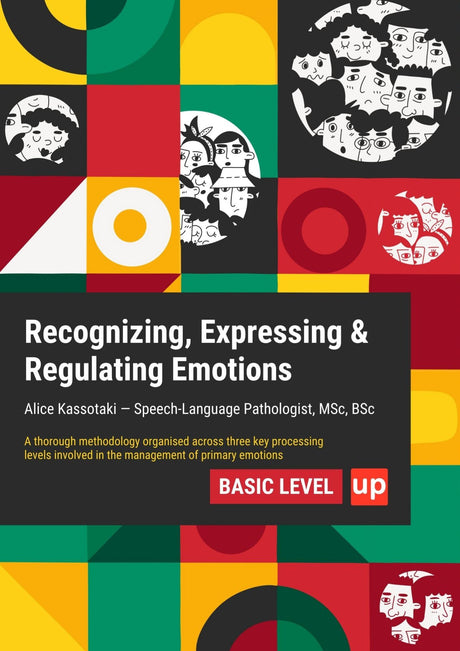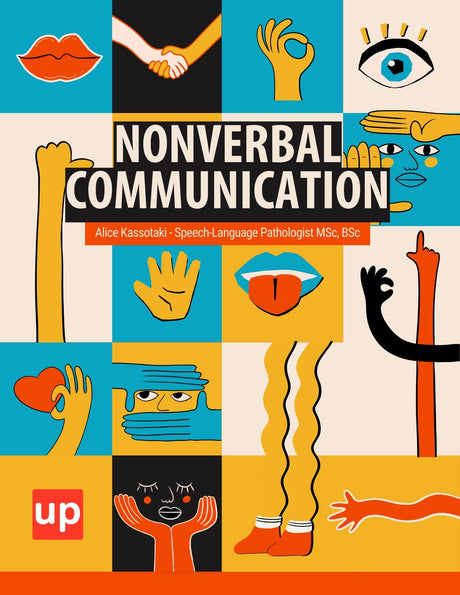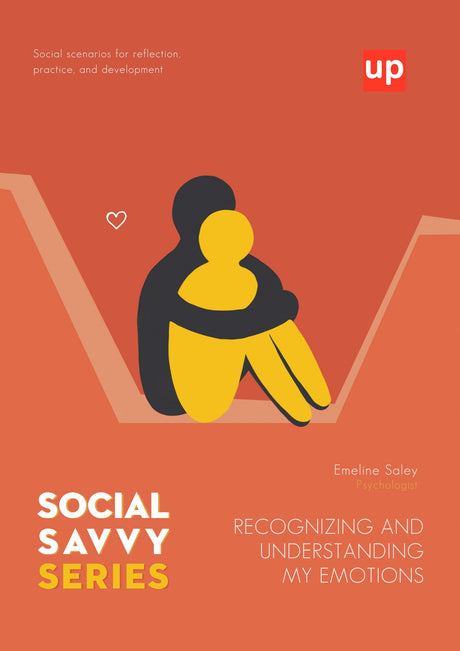When a child flaps their hands in a burst of excitement, the thought of autism often surfaces first. This rapid association, reinforced by popular media and diagnostic checklists, has created a powerful stigma around a common human behavior. Hand flapping—the quick, rhythmic movement of the hands at the wrist—is widely recognized as a form of self-stimulatory behavior, or "stimming," particularly within the context of autism spectrum disorder (ASD). It’s a vital coping mechanism for managing sensory input and expressing intense emotions.
Key Points
- Hand flapping is a common behavior across both neurotypical and autistic individuals. While often associated with autism, it also serves as a natural form of emotional expression and sensory regulation in many neurotypical children.
- Context, frequency, and function differentiate typical hand flapping from autistic stimming. Neurotypical hand flapping is usually brief and tied to specific emotions, whereas autistic stimming tends to be more frequent, intense, and serves as a critical coping mechanism for sensory experiences.
- Seeking professional guidance is important when hand flapping is persistent or accompanied by other developmental concerns. A comprehensive developmental assessment can help determine if intervention strategies or therapies like ABA therapy are needed to support the child's well-being and development.
The Common Perception: Hand Flapping and the Autism Spectrum

For many, the image of hand flapping is inextricably linked to autism. It's often one of the first repetitive behaviors parents are told to watch for. In the context of the autism spectrum, these movements serve critical functions, from self-regulation during sensory overload to expressing joy or distress when words fall short. This association is valid and important, but it represents only one part of a much larger story about human expression.
Our Deeper Dive: Unpacking Neurotypical Expressions
This article moves beyond the singular narrative of stimming to explore hand flapping as it appears in neurotypical individuals, particularly children. While the physical action may look similar, its context, frequency, and function can differ significantly. By understanding these neurotypical expressions, we can appreciate hand flapping not as an automatic "red flag," but as an insightful window into emotional states, cognitive processing, and developmental stages.
What Does "Neurotypical Hand Flapping" Look Like?
In neurotypical individuals, especially young children, hand flapping is a common and often fleeting behavior. It's a physical manifestation of an internal state that hasn't yet found a more socially conventional or verbal outlet. The key is to see it not as an isolated tic, but as part of a broader language of movement and expression.
Defining Repetitive Hand Movements and Gestures
Neurotypical hand flapping falls under the umbrella of repetitive hand movements. Unlike the often more sustained and intense stimming seen in autism, these movements are typically brief and directly tied to a specific, observable trigger. They are a form of nonverbal communication—a primitive but effective way for a young mind to convey an overwhelming feeling when complex language and emotional regulation skills are still developing.
Subtle Shakes, Fidgets, and Excited Wiggles: Varieties of Expression
The neurotypical "flap" is rarely a single, uniform action. It can manifest as a quick, excited wiggle of the hands and wrists upon seeing a beloved grandparent, a series of short, sharp flaps during a moment of frustration, or a subtle shake of the hands while deeply concentrating on a puzzle. These are often precursors to more refined gestures and are part of the typical motor exploration that all children experience.
Unmasking the Reasons: Why Neurotypicals Flap Their Hands
Understanding the "why" behind neurotypical hand flapping is crucial to destigmatizing the behavior. It's not a malfunction; it's a feature of a developing brain learning to manage a complex world of emotions, thoughts, and sensory information.
Emotional Expression: From Elation to Unease
For toddlers and young children, emotions are powerful forces that can easily overwhelm their capacity for self-control. Hand flapping becomes a physical release valve. A child might flap their hands out of pure, uncontainable joy, frustration at a toy that won't cooperate, or anxiety in a new situation. As one resource notes, neurotypical children may engage in hand flapping for the same reasons as someone with autism—they're in a heightened emotional state and don't yet know how to express it in another way, according to Apricott ABA.
Cognitive Processing and Deep Thought: An Unconscious Aid
Have you ever paced while talking on the phone or tapped a pen while solving a problem? These are forms of adult "stimming" that aid cognitive function. For a child, a slight flutter or flap of the hands can serve a similar purpose. This repetitive movement can help them focus their attention, block out minor distractions, and process information more effectively while working through a challenging mental task.
Mild Self-Regulation and Coping Mechanisms
Hand flapping can also be an early, instinctual form of self-regulation. The rhythmic motion provides predictable sensory input that can be calming in moments of mild stress or overstimulation. It’s a foundational coping mechanism that children often outgrow as they develop more sophisticated strategies, such as deep breathing, talking about their feelings, or seeking a hug.
Drawing the Line: Differentiating from Autistic Stimming
While the behavior can look the same, understanding the differences in function, context, and frequency is key to distinguishing typical developmental expression from autistic stimming.
Understanding Stimming: A Core Aspect of Autism Spectrum Disorder
In the context of autism spectrum disorder, stimming is a purposeful and often essential self-regulatory behavior. It helps autistic individuals manage sensory input—either to block out overwhelming sensory information (like loud noises or bright lights) or to provide needed input when feeling under-stimulated. It's a primary tool for emotional regulation and maintaining a sense of internal balance in a world that can feel chaotic.
Key Distinctions in Context, Intensity, and Function
The primary distinctions lie in three areas. First, context: neurotypical hand flapping is often tied to a specific, fleeting emotion (like excitement) and diminishes as language develops. Autistic stimming occurs across various contexts and is a more consistent regulatory tool. Second, intensity: autistic stimming can be more frequent, intense, and may persist long after early childhood. Finally, function: while a neurotypical child’s flap is mainly expressive, an autistic person’s stim is often a critical coping mechanism tied to their unique sensory processing needs. While many neurotypical people exhibit stimming behaviors like fidgeting, for those with conditions like ADHD or autism, these behaviors are often more pronounced and can impact daily life, as noted by Wikipedia.
The "Always Insightful" Perspective: Reading Neurotypical Nonverbal Cues

Rather than dismissing neurotypical hand flapping as something to be "outgrown," we should view it as a valuable source of information. It is a raw, unfiltered form of communication that provides a direct look into a child's inner world.
Decoding Unspoken Messages: A Window into Internal States
When a child flaps their hands, they are telling you something important. They might be communicating immense joy, signaling that they are feeling overwhelmed, or showing you they are deeply engaged in thought. Paying attention to these cues allows parents and caregivers to respond more effectively, offering comfort during distress or sharing in a moment of happiness.
Fostering Empathy and Better Understanding in Social Interactions
Recognizing hand flapping as a valid form of self-expression builds empathy. It teaches us to look beyond surface behaviors and consider the underlying emotion or need. This understanding strengthens social interactions, creating a more supportive environment where children feel seen and accepted for how they communicate, whether through words or movements.
Dispelling Myths and Embracing Neurodiversity (Beyond Autism)
To fully appreciate the spectrum of human expression, we must challenge the narrow view that certain behaviors belong exclusively to one neurotype. Hand flapping is a human behavior, not just an autistic one.
Challenging the Single Narrative: Hand Flapping Isn't Always a "Red Flag"
Viewing every instance of hand flapping as a potential symptom of a disorder can cause unnecessary anxiety for parents and lead to the suppression of normal developmental behaviors. It's crucial to evaluate any repetitive behavior within the broader context of a child's overall development, social skills, and communication abilities.
Promoting Broader Acceptance of Diverse Human Expression
Embracing neurodiversity means accepting that people process the world and express themselves in different ways. Whether it's the excited flaps of a toddler or the necessary stimming of an autistic adult, these movements have a purpose. True acceptance means shifting the focus from "fixing" these behaviors to understanding and accommodating the needs they fulfill.
When to Consult a Professional: Knowing the Signs of Broader Concern

While neurotypical hand flapping is common, there are times when it may be part of a larger pattern of developmental differences that warrant a professional evaluation.
Recognizing Red Flags Beyond Typical Expressions
Concern may be appropriate if hand flapping is persistent, increases in intensity over time, and occurs alongside other developmental signs. These can include significant delays in language or speech, difficulty with social interactions, intense and narrow interests, extreme reactions to sensory stimuli, or a loss of previously acquired skills. The key is to look at the whole child, not just one behavior in isolation.
The Importance of a Holistic Developmental Assessment
If you have concerns, a comprehensive developmental assessment by a pediatrician, child psychologist, or developmental specialist is the best course of action. These professionals can evaluate all aspects of a child's development—cognitive, social, emotional, and motor—to provide a clear picture and recommend appropriate support or early intervention if needed.
Conclusion: A Deeper Understanding of Human Expression
Hand flapping is a deeply human act of expression and regulation. In neurotypical children, it is a fleeting, insightful language that speaks of joy, struggle, and deep concentration. In autistic individuals, it is an essential tool for navigating the world and maintaining equilibrium. By looking past the stigma and seeking to understand the "why" behind the flap, we move toward a more empathetic and accepting view of the diverse ways we all communicate. Instead of seeing it as a problem to be solved, we can learn to see it for what it is: a meaningful expression from a mind and body working to find its place in the world.
Frequently Asked Questions (FAQ)
What is hand flapping neurotypical behavior?
Hand flapping neurotypical behavior refers to the repetitive movement of the hands and wrists seen in many neurotypical children. It is usually brief and tied to specific emotions such as excitement or frustration, serving as a natural form of emotional expression and sensory regulation.
Is hand flapping always a sign of autism?
No, hand flapping is not always a sign of autism. While it is commonly associated with autism spectrum disorder, many neurotypical children also exhibit hand flapping as a normal behavior during moments of excitement, anxiety, or sensory overload.
Why do children with autism exhibit hand flapping?
Children with autism often engage in hand flapping as a form of stimming, which helps them self regulate sensory input and express emotions. This repetitive motion serves as a coping mechanism to manage overwhelming sensory experiences and emotional states.
When should I be concerned about my child's hand flapping?
Concern may be warranted if hand flapping is persistent, intense, and accompanied by other developmental delays or difficulties with social interactions. If hand flapping interferes with a child's ability to function in daily life or express emotions in alternative ways, seeking professional support is recommended.
How can I support a child who exhibits hand flapping?
Supporting children who exhibit hand flapping involves understanding the behavior's function, providing alternative behaviors when appropriate, and creating nurturing environments that respect individual differences. Positive reinforcement and professional therapies such as ABA therapy can also be beneficial.
Can hand flapping be managed or reduced?
Yes, through intervention strategies that focus on addressing hand flapping, teaching alternative ways to express emotions, and helping the child develop self regulation skills, the frequency and intensity of hand flapping behaviors can often be managed effectively.
Are there other stimming behaviors similar to hand flapping?
Yes, many stimming behaviors exist, including body rocking, head banging, repetitive sounds, and auditory stimming. Each serves a purpose in helping individuals express emotions or self soothe.
What role do occupational therapists play in supporting children who exhibit hand flapping?
Occupational therapists can assess sensory processing needs and help create environments and strategies that support sensory regulation, reduce sensory overload, and promote positive behaviors, including managing hand flapping and other repetitive actions.
Original content from the Upbility writing team. Reproducing this article, in whole or in part, without credit to the publisher is prohibited.
References
-
Centers for Disease Control and Prevention (CDC). Diagnostic Criteria for Autism Spectrum Disorder (ASD). Retrieved from https://www.cdc.gov/ncbddd/autism/hcp-dsm.html
-
Blue ABA Therapy. Hand Flapping & Stimming in Autism Explained. Retrieved from https://blueabatherapy.com/autism/stimming-hand-flapping
-
Gold Star Rehab. Hand Flapping When Excited: Not Always Autism. Retrieved from https://www.goldstarrehab.com/parent-resources/hand-flapping-when-excited-not-autism
-
Innovative Interventions. Is Hand Flapping A Sign Of Autism? Retrieved from https://www.innovativeinterventionsnj.com/post/is-hand-flapping-a-sign-of-autism
-
ChildWise ABA. Understanding Hand Flapping in Children with Autism. Retrieved from https://childwiseaba.com/understanding-hand-flapping-in-children-with-autism
-
Rori Care. 7 Reasons Hand Flapping Is Not Always a Sign of Autism. Retrieved from https://www.rori.care/post/7-reasons-hand-flapping-is-not-always-a-sign-of-autism
-
Apricott ABA. Understanding Stimming Behaviors in Children. Retrieved from https://apricottaba.com/blog/understanding-stimming-behaviors-in-children
-
Wikipedia. Stimming. Retrieved from https://en.wikipedia.org/wiki/Stimming
-
Strauss, M. S. (University of Pittsburgh). Research on Emotional Expression in Children.
-
Baranek, G. T. Pediatric Sensory Characteristics and Early Intervention. Journal of Developmental & Behavioral Pediatrics.









